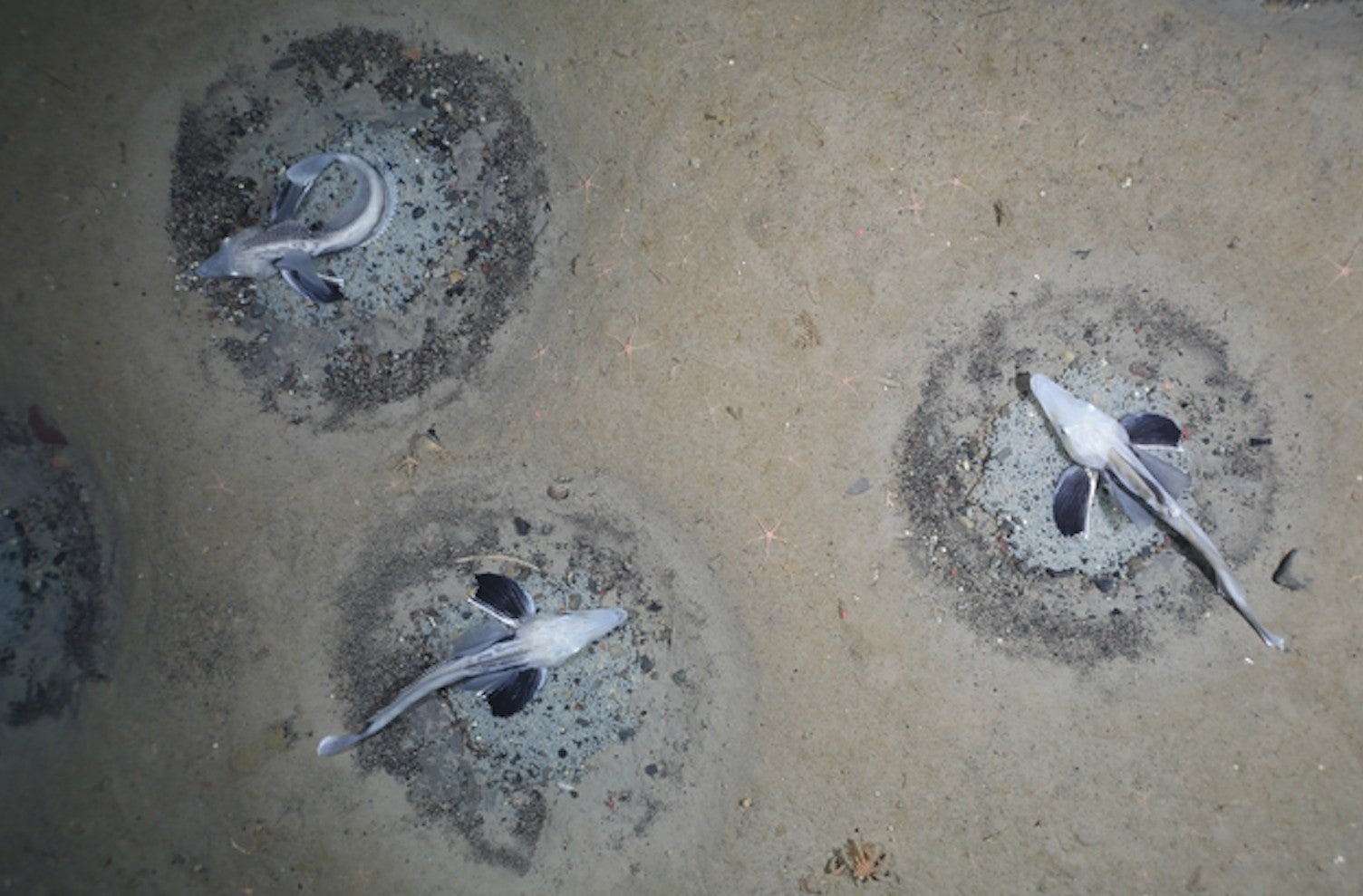
World’s Largest Fish Nesting Ground With 60 Million Nests Discovered Under Antarctic ice
Image credit: Alfred Wegener Institute, PS124 OFOBS Team
Purser’s enthusiastic statement is easy to understand when you realize that the AWI has been researching this particular stretch of the Weddell Sea for the past 40 years, but so far only small clusters of icefish breeding sites were found. So, why exactly here? The team used oceanographic and biological data to establish that the vast breeding site coincided with an inflow of warmer deep water from the Weddell Sea onto the nesting ground shelf.
Since each active nest contains about 1,000-2,000 eggs and there are many adults hanging around to protect them, the biomass of the colony is estimated to weigh around 60,000 tons. It is now wonder, then, that the resource-rich area is also frequented by hungry Weddell seals.
Being the most spatially extensive contiguous fish breeding colony ever recorded on Earth, the nesting site definitely tops the charts for significant breeding sites – a pretty solid argument for the establishment of the marine protected area proposed.
Image credit: Alfred Wegener Institute, PS124 OFOBS Team
“Considering how little known the Antarctic Weddell Sea is, this underlines all the more the need of international efforts to establish a Marine Protected Area (MPA),” said AWI Director and deep-sea biologist Professor Antje Boetius, who took part in developing non-invasive technology that to allowed the team to observe the ecosystem without disturbing it. “Unfortunately, the Weddell Sea MPA has still not yet been adopted unanimously by CCAMLR. But now that the location of this extraordinary breeding colony is known, Germany and other CCAMLR members should ensure that no fishing and only non-invasive research takes place there in future.”
Purser’s enthusiastic statement is easy to understand when you realize that the AWI has been researching this particular stretch of the Weddell Sea for the past 40 years, but so far only small clusters of icefish breeding sites were found. So, why exactly here? The team used oceanographic and biological data to establish that the vast breeding site coincided with an inflow of warmer deep water from the Weddell Sea onto the nesting ground shelf.
Since each active nest contains about 1,000-2,000 eggs and there are many adults hanging around to protect them, the biomass of the colony is estimated to weigh around 60,000 tons. It is now wonder, then, that the resource-rich area is also frequented by hungry Weddell seals.
Being the most spatially extensive contiguous fish breeding colony ever recorded on Earth, the nesting site definitely tops the charts for significant breeding sites – a pretty solid argument for the establishment of the marine protected area proposed.
Image credit: Alfred Wegener Institute, PS124 OFOBS Team
“Considering how little known the Antarctic Weddell Sea is, this underlines all the more the need of international efforts to establish a Marine Protected Area (MPA),” said AWI Director and deep-sea biologist Professor Antje Boetius, who took part in developing non-invasive technology that to allowed the team to observe the ecosystem without disturbing it. “Unfortunately, the Weddell Sea MPA has still not yet been adopted unanimously by CCAMLR. But now that the location of this extraordinary breeding colony is known, Germany and other CCAMLR members should ensure that no fishing and only non-invasive research takes place there in future.”
Advertisements
13 February 2024
Advertisements



